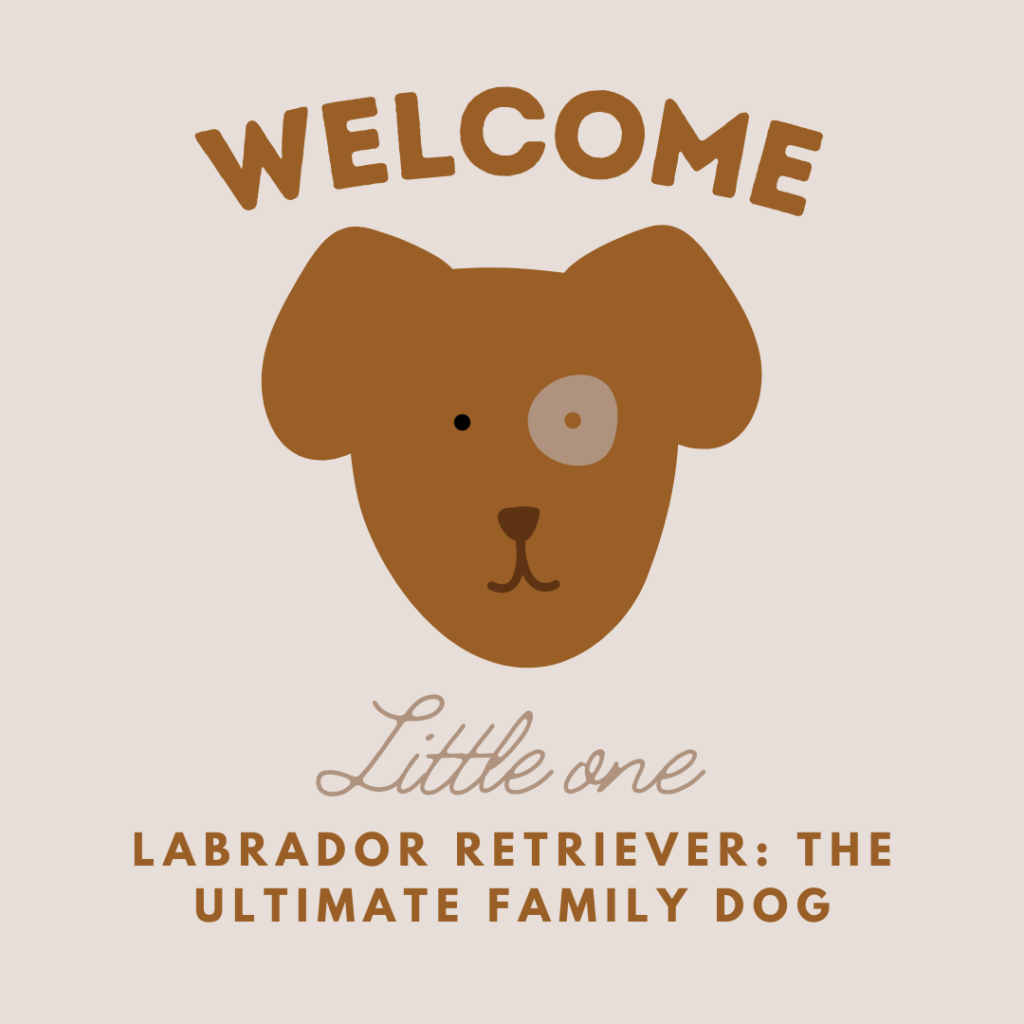Labrador Retriever: The Ultimate Family Dog
Research and Preparation

- Conduct Thorough Research: Begin by delving into the world of Labrador Retrievers, understanding their unique temperament, care requirements, and potential health concerns. Read books, articles, and consult with experienced Labrador owners to gain valuable insights into the breed.
- Choose a Reputable Breeder or Shelter: Once you’re well-informed about the breed, start your search for a responsible breeder or shelter. Reputable breeders prioritize the health and well-being of their dogs, ensuring they receive proper socialization and early training. Shelters offer the opportunity to provide a loving home for a Labrador in need.
- Visit Breeders or Shelters in Person: Schedule visits to meet potential breeders or shelters. Observe the environment, interact with the dogs and their parents, and ask questions about their breeding practices or adoption process. Trust your instincts and choose a breeder or shelter that aligns with your values and provides a nurturing environment for their dogs.
- Prepare Your Home: Before bringing your Labrador home, ensure your living space is safe and dog-friendly. Remove potential hazards like toxic plants, electrical cords, and small objects that could be swallowed. Provide a comfortable bed, food and water bowls, and plenty of chew toys to keep your Labrador entertained and prevent destructive behavior.
Welcoming Your Labrador Home
- Schedule a Veterinary Checkup: Upon bringing your Labrador home, schedule an appointment with a veterinarian for a thorough checkup. This will ensure your dog is up-to-date on vaccinations, parasite prevention, and receives a baseline health assessment.
- Establish a Routine: Create a consistent routine for your Labrador, including regular mealtimes, walks, playtime, and bedtime. This will help your dog adjust to their new environment and feel secure and loved.
- Introduce Your Labrador to Family and Pets: Gradually introduce your Labrador to family members and other pets in a controlled and supervised setting. Allow them to sniff and interact at their own pace, providing positive reinforcement and treats for good behavior.
- Positive Reinforcement Training: Start training your Labrador using positive reinforcement techniques, such as rewarding desired behaviors with treats, praise, or playtime. This method builds trust and strengthens your bond with your dog.
Essential Care for Your Labrador Retriever
- Nutrition and Diet: Provide your Labrador with a high-quality diet appropriate for their age, activity level, and overall health. Consult with your veterinarian to determine the best food and feeding schedule for your dog.
- Regular Exercise: Labradors are energetic dogs that require regular exercise to stay physically and mentally stimulated. Aim for at least an hour of exercise daily, including walks, runs, swimming, or playtime.
- Grooming and Hygiene: Brush your Labrador’s coat regularly to remove loose hair and prevent mats. Bathe them as needed, using dog-specific shampoo and conditioner. Trim their nails regularly and maintain their dental hygiene by brushing their teeth daily.
- Veterinary Care: Schedule regular veterinary checkups for your Labrador to monitor their health, ensure they are up-to-date on vaccinations, and receive prompt treatment for any health concerns.
Enjoying Life with Your Labrador Companion
- Bonding and Training: Continue training your Labrador using positive reinforcement methods, gradually increasing the complexity of commands and tricks. Engage in regular playtime, take them on adventures, and provide plenty of opportunities for mental stimulation.
- Socialization and Enrichment: Socialize your Labrador with other dogs and people to ensure they are well-adjusted and friendly. Enroll them in obedience classes or agility training to enhance their skills and provide mental enrichment.
- Unconditional Love and Companionship: Cherish the unwavering love, loyalty, and companionship your Labrador brings to your life. Embrace their playful spirit, adventurous nature, and unwavering devotion, and create unforgettable memories together.
Additional Tips for a Smooth Transition
- Puppy-Proofing Your Home: If you are adopting a Labrador puppy, take extra precautions to puppy-proof your home. Secure electrical cords, remove toxic plants, and keep small objects out of reach to prevent accidents or ingestion.
- Crate Training: Consider crate training your Labrador to provide them with a safe and comfortable den-like space. Crate training can also be helpful for housebreaking and preventing destructive behavior when you are unable to supervise your dog.
- Patience and Consistency: Remember that each dog learns at their own pace. Be patient and consistent with your training methods, and avoid using harsh punishment or negative reinforcement. Positive reinforcement and consistent training will yield the best results and build a strong bond with your Labrador.
- Seek Professional Help if Needed: If you encounter challenges or have questions about your Labrador’s behavior, don’t hesitate to seek professional help from a certified dog trainer or behaviorist. They can provide personalized guidance and support to ensure a harmonious relationship with your dog.
Labrador Retriever: FAQ
1. Are Labrador Retrievers good family dogs?
Yes, Labrador Retrievers are widely recognized as exceptional family dogs due to their gentle and affectionate nature, playful spirit, and intelligence. They are known for their patience and tolerance with children, making them ideal companions for families of all sizes. Their eagerness to please and trainability make them easy to integrate into family life, and their boundless energy matches the enthusiasm of active children.
2. What is the lifespan of a Labrador Retriever?
The average lifespan of a Labrador Retriever is 10 to 12 years. However, with proper care, including a healthy diet, regular exercise, and preventive veterinary care, many Labradors can live well into their 15s or even 16s.
3. How much exercise does a Labrador Retriever need?
Labrador Retrievers are energetic dogs that require regular exercise to stay physically and mentally stimulated. Aim for at least an hour of exercise daily, including walks, runs, swimming, or playtime. They also enjoy activities like fetch, hiking, and agility training.
4. How much does a Labrador Retriever cost?
The cost of a Labrador Retriever can vary depending on several factors, such as the breeder’s reputation, the dog’s lineage, and the location. Generally, you can expect to pay between $800 and $2,000 for a Labrador Retriever from a reputable breeder.
5. How do I train a Labrador Retriever?
Labrador Retrievers are intelligent and eager to please, making them relatively easy to train. Positive reinforcement methods, such as rewarding desired behaviors with treats, praise, or playtime, are highly effective with Labradors. Start training early and be consistent with your commands and expectations.
6. How do I groom a Labrador Retriever?
Labrador Retrievers have short, dense coats that require regular brushing to remove loose hair and prevent mats. Bathe them as needed, using dog-specific shampoo and conditioner. Trim their nails regularly and maintain their dental hygiene by brushing their teeth daily.
7. What are some common health problems in Labrador Retrievers?
Some common health problems in Labrador Retrievers include hip and elbow dysplasia, obesity, eye problems, and allergies. Regular veterinary checkups and early detection can help manage these conditions and promote overall health.
8. What is the best food for a Labrador Retriever?
The best food for your Labrador Retriever will depend on their age, activity level, and overall health. Consult with your veterinarian to determine the most appropriate diet for your dog. Choose high-quality dog food that provides complete and balanced nutrition.
9. How do I socialize my Labrador Retriever?
Socialization is crucial for Labrador Retrievers to develop into well-adjusted and friendly dogs. Expose them to different people, dogs, and environments from an early age. Enroll them in puppy classes or obedience training to enhance their socialization skills.
10. How do I deal with my Labrador Retriever’s destructive behavior?
Destructive behavior in Labrador Retrievers can often be caused by boredom, anxiety, or lack of exercise. Provide your dog with plenty of physical and mental stimulation, including regular exercise, playtime, and interactive toys. If the behavior persists, consult with a veterinarian or certified dog trainer.
11. What are some fun activities I can do with my Labrador Retriever?
Labradors love to play and explore. Engage them in activities like fetch, hiking, swimming, agility training, or obedience classes. You can also try nose work, frisbee, or puzzle toys to challenge their minds.
12. How do I travel with my Labrador Retriever?
If you plan to travel with your Labrador Retriever, make sure they are comfortable in a crate or car carrier. Acclimate them to the crate or carrier gradually before your trip. Research pet-friendly accommodations and transportation options.
13. What should I do if my Labrador Retriever gets lost?
If your Labrador Retriever gets lost, take immediate action. Notify local animal shelters and rescue organizations. Create flyers with your dog’s photo and contact information. Microchipping your dog can significantly increase the chances of a safe return.
14. How do I deal with my Labrador Retriever’s separation anxiety?
Separation anxiety can manifest in various ways, such as excessive barking, destructiveness, or accidents in the house. Gradually increase the time you spend away from your dog, starting with short periods and gradually increasing them. Provide them with a safe and comfortable space when you are gone.
15. What are some signs that my Labrador Retriever is sick?
Common signs of illness in Labrador Retrievers include lethargy, loss of appetite, vomiting, diarrhea, coughing, sneezing, and changes in behavior. If you notice any of these signs, consult with your veterinarian promptly.
16. How do I keep my Labrador Retriever’s teeth healthy?
Regular dental care is essential for maintaining your Labrador Retriever’s oral health. Brush their teeth daily using dog-specific toothpaste and a toothbrush. Provide them with dental chews and toys to help clean their teeth and prevent plaque buildup.
17. How do I keep my Labrador Retriever’s ears clean?
Inspect your Labrador Retriever’s ears regularly for redness, discharge, or odor. Clean their ears as needed using a dog ear cleaning solution and cotton balls. Avoid using cotton swabs, as they can damage the eardrum.
18. How do I bathe my Labrador Retriever?
Bathe your Labrador Retriever as needed, using dog-specific shampoo and conditioner. Wet their coat thoroughly, apply shampoo, and massage it into their skin. Rinse thoroughly and apply conditioner. Allow them to air dry or towel dry gently.
19. How do I trim my Labrador Retriever’s nails?
Trim your Labrador Retriever’s nails regularly to prevent them from becoming overgrown and uncomfortable. Use dog nail clippers and be careful not to cut the quick, the blood vessel inside the nail. If you are unsure, ask your veterinarian or a groomer for assistance.
20. What are some of the best things about owning a Labrador Retriever?
Labrador Retrievers are beloved for their many wonderful qualities, including:
- Unwavering loyalty and affection: Labradors form strong bonds with their families and provide unwavering love and companionship.
- Playful spirit and zest for life: Labradors are always up for fun and bring a sense of joy and adventure to their owners’ lives.
- Intelligence and eagerness to please: Labradors are intelligent dogs that are eager to learn and please their owners, making them relatively easy to train.
- Gentle and patient nature: Labradors are known for their gentle and patient nature, making them ideal companions for children and other pets.
- Versatility and adaptability: Labradors excel in various roles, from family companions to working dogs, and can adapt to different lifestyles and environments.




